How to Find the Best French Horn for You
Many people consider the French horn to be the loveliest sounding instrument in the entire orchestra. The French horn, or horn, for short, emits a mellow sound that can transform a simple tune into a special melody to soothe and lift your spirits. Also, horns are powerful, so their sound can cut through any orchestral texture, especially when the entire section plays loudly. Nowadays, there are many choices in them, so how do you find the best French horn for you? Keep reading to learn much more about the French horn and how to shop for one.
I took music lessons at the University of Northern Iowa. My primary instruments are the piano and the cello. I’m also the parent of two girls who both played in one of the top-rated high school bands in Texas. They studied under the legendary Mike Brady who won 18 band competitions in a row. I also polled five high school band teachers (who I’m lucky count among my friends). The wealth of information they’ve passed on at local, regional and statewide band competitions has been invaluable in helping me produce this article.
A Short History of the French Horn
Perhaps the most common role of the French horn is as a harmonic filler that lands between the melody and the bass line. Horns can hold long, sustained notes in the background. So, early on, composers learn how to use the French horn as a key orchestral technique. And, not only is it easy to do and the sound is amazing, it’s a great way to tie the whole orchestra together.
The French horn goes back to the hunting horns from before the 16th century. These horns were only able to produce natural, harmonic scales. Starting about the 16th century, these horns found their way into operas, and the French horn was born. Each time the conductor wanted the musicians to play on a different scale, the musician had to switch instruments.
In the 1750’s, the Bohemian musician, Anton Hampel, figured out how to manipulate his right hand inside the bell to create different notes, which they called “handstopping.” This made the instrument more flexible. But soon, they invented various crooks for horns. However, it was still cumbersome to carry the many crooks and mouthpieces.
In the 19th century, they started using valves instead of crooks, and the modern French horn was born. Two men claim credit for creating the modern French horn: Heinrich Stoelzel and Friedrich Blühmel. However, since those early days, beginning horns have come a long way.
Top Recommendation: Conn 6D Artist Series
The Conn 6D is the top recommendation for several reasons. Especially for the beginning player, it is not as intimidating because of its smaller size. This double French horn is has a lovely, balanced tone. The build quality excellent, so the 6D will provide years of problem-free playing.
From the author’s research and testing, the best French horn is the Conn 6D Artist Series. But the player must big enough to handle the instrument’s weight. Also, they should be advanced enough to handle playing a double horn. If you are a parent of an aspiring French horn player, buy a double French horn because it will grow with your student. The author based her recommendation on this type of horn.

Credit: Conn-Selmer
The Conn 6D is about 25 percent smaller than many comparable models. Its smaller size also allows players to play rapid notes with ease. Furthermore, they designed this double French horn to perfectly blend in with ensembles instead of being overwhelming. This instrument has a .468-inch bore size, allowing players to play forte and fortissimo easier because there is less air resistance.
The 12-inch fixed bell allows players to control the air flowing through to create different sounds. And the smaller bell size enables players to control the air flowing through the instrument. The yellow-rose metal helps this French horn provide a brilliant sound. The lead pipes on the Conn 6D are also yellow brass. This makes it belong on this list of the best French horns.
The Kruspe Method Makes This One of the Best French Horns
The rotors use the Kruspe method for a better blending sound between the F and the B flat sides of this instrument, making it simple to play slurs. The yellow brass material with the Kruspe design creates a balanced instrument. The nickel tuning pipes enhance the beauty of this instrument. And it looks particularly attractive because of the contrast between the nickel and yellow gold pipes.
The Conn 6D has string rotor levers, making it a quieter instrument than those with metal. Also, experienced players and teachers can replace the string on these instruments quickly. This instrument has nickel slides that should provide years of problem-free playing. However, they may require oiling on occasion. The quiet performance of this instrument is due to the tapered rotors and bearings.
Conn has added a lacquer finish to make it look shiny when you keep it clean. Players find that the finish is thick enough to stay in place for many years. This instrument takes the Conn 2 mouthpiece that is readily available (check at Musician’s Friend). Overall, this is a solid instrument that will provide years of enjoyment.
Horton H179
Farkas series fixed bell double horn where both horns can be tuned independently.
If you are shopping for a medium-sized horn, the Holton H179 is the best French horn for you. Philip Farkas who formerly played with the Chicago Symphony designed this instrument. And Horton has designed this horn to provide a centered tone. It is it particularly useful by first-chair players and those performing solos. This horn is famous for its reliability, while its smaller size makes it easier for students and adults of smaller statures to master.

Credit: Holton
The Horton H179 contains a water-release valve. The bore on this instrument is .468, allowing players to produce great airflow with little resistance. The bell measures 12.25 inches, so everyone can hear the beautiful music coming from this instrument. This instrument has a slightly smaller bell throat than the Conn 6D, but it offers little air resistance. One big advantage of this French horn when you compare it to other models is that you can tune both horns independently.
Like the Conn 6D, this instrument features string linkage. However, it is not quite as easy to replace the string because of the design. Controlling the register is simple with this instrument to get outstanding tones across a broad range. This instrument would be the first pick if they didn’t nickle-plate it, which produces a darker tone.
Alexander 103
Abel Pereira of the National Symphony Orchestra plays an Alexander 103. Musicians either love or hate this instrument because of its deep throaty sound. In fact, it can be overpowering when compared to American French horns. Up to the last 10 years, Alexander has been inconsistent in their build quality. However, this instrument has a .476 inch bore for players to move air easily.

Credit: Gebr Alexander
The well-designed thumb valve allows you to play it on either side. Unlike most American and European models, the 12.2-inch bell has a slight 12.2-in chowing for better projection. This horn, which is available in a variety of materials, is particularly useful for ensembles looking for projection and precision.
Atkinson Geyer AG2K
Atkinson hand-makes every component of their French horn so that their instrument produces the best possible tone. This horn features the original Geyer valves. Buyers can find this model in two different bell sizes. So, just choose the one that fits your hands the best. A trigger valve allows the player to easily switch this instrument from the B flat/F configuration to the F/B flat configuration.

Credit: Atkinson Horns
The addition of F slide tuning crooks along with the main tuning crooks lets players tune the instrument with ease. An adjustable palm flipper and an adjustable finger hook allow players to experience less fatigue. But, the soldering work on some of these instruments could be tidier. They use the Atkinson French horn in numerous symphonies in the U.S., like California, as well as Australia.
Paxman Series 4
This Chinese-manufactured French horn is a serious contender, especially for the budget-minded consumer. This horn features a detachable bell to make it easier for people to transport. Also, the protective hand guard protects the instrument from sweat on the player’s hands. This yellow-brass instrument provides a classically warm tone. The Paxman has an incredibly strong clear upper register.

Credit: Paxman
The French horn allows players to move air through this instrument effectively. Player fatigue is not a problem because this instrument features a removable thumb hook and an adjustable finger hook. Since both are fully adjustable, many young players find this instrument simple to master.
This Paxman instrument has a modified Geyer wrap because it contains extra piping on the F side. However, it doesn’t seem to affect the tone. Professor of music and founder of Horn Matters Magazine, John Ericson at Arizona State University particularly loves this instrument.
Yamaha YHR567 F / Bb Double French Horn
Nickel-silver for the inner and outer slides does not corrode as easily as brass.
One of the most responsive French horns is the Yamaha YHR567 because of the tapered leadpipes. Yamaha chose to use nickel-silver for the inner and outer slides. This is because it doesn’t corrode as easily as brass. So this instrument should provide years of playing fun.

Credit: Yamaha Corporation
They carefully designed the tapered values to make them last a long time without air leakage. This means the instrument’s individual notes will shine through crisply. This instrument would have placed higher if there was a convenient way to switch sides, which is popular in newer French horns. Lastly, the Geyer wrap on this instrument makes it particularly easy to hold.
All of these French horns are high-quality instruments, but they each have their own features. So, be sure to consider all your needs before choosing one, so you’ll get the best French horn for you.
How to Choose the Best French Horn as a Beginner
There are many different types of the best French horns. Therefore, if you are a parent, check with the teacher to know the exact type of French horn your student needs. Alternatively, if you are going to play in a musical group or orchestra, check with the conductor. Here are the types of French horns available today:
- Single Horns: Most people begin playing a single French horn as they are less expensive, easier to master and weigh less. The F horn is usually the most popular choice since it plays the mid-octaves extremely well. The B flat horn weighs even less and reaches the higher notes, although it is impossible to play some lower notes. Marching French horns can be either B flat or F and are easier to hold while marching.
- Double Horns: Serious players can play a double horn because it uses a rotor. This allows players to switch between an F horn and a B flat horn by keeping air from moving through parts of the tube. However, double horns are harder to play for inexperienced players.
- Two Types of Double French Horns: There are two different styles of double horns. The fourth rotor is located above the other three in Kruspe wrap instruments. And the Geyer wrap puts the fourth rotor behind the third. A descant horn is a double horn containing a B flat French horn and an alto F horn. These horns give players more note stability in the upper register.
- Triple Horns: The triple horn is a favorite with many professional players because it adds an alto F horn to the double horn. This allows experienced players to play more notes easily.
Know Your French Horn Options
It is important to understand the different options available in the best French horns available today. Also, knowing the advantages and disadvantages of each can help you find the best French horn for you. Read on to learn more about the choices you have in the best French horns.
- Rotor Linkage: The rotor linkage can be either string or a metal rod. The advantage of strings is that they are quieter but they sometimes break. The advantage of metal is that you don’t normally need to replace them.
- Bell Size: The larger the bell size, the more full-bodied the music will sound. The tradeoff is that instruments with larger bells are harder to control.
- Bell and First Branch Materials: Various French horns sound different because the bell and first branch consist of different materials. Players who play mostly in the treble range find that yellow brass produces a brilliant sound. Also, nickel and silver produce the darkest tone. French horns of rose brass, which people often call gold or red brass, get the least responsiveness.
- Detachable Bells: The reason many French horns have detachable bells is to make them easier to transport. If the manufacturer has constructed the instrument of quality materials, there are no problems with using a detachable bell.
As a recap here’s are the horns we covered:
The Conn 6D is the top recommendation for several reasons. Especially for the beginning player, it is not as intimidating because of its smaller size. This double French horn is has a lovely, balanced tone. The build quality excellent, so the 6D will provide years of problem-free playing.
Farkas series fixed bell double horn where both horns can be tuned independently.
Nickel-silver for the inner and outer slides does not corrode as easily as brass.

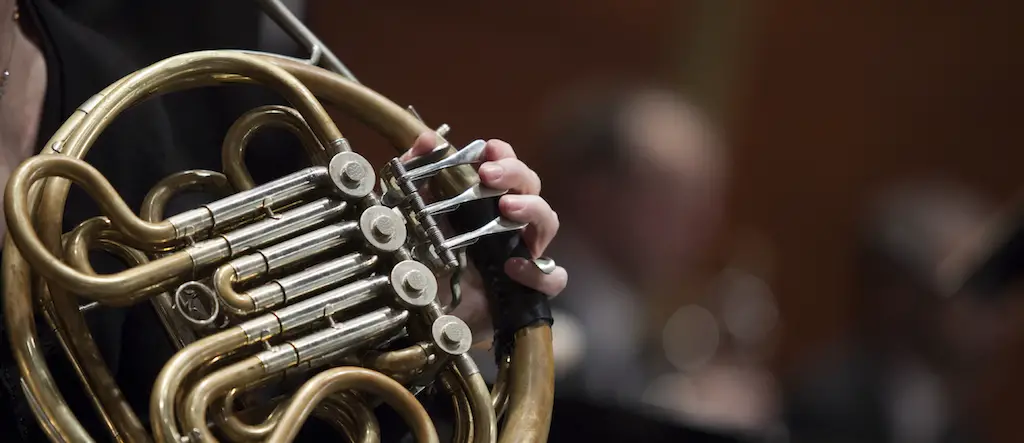






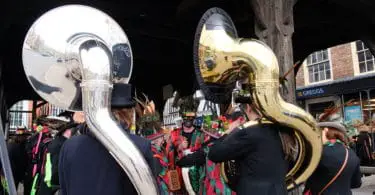

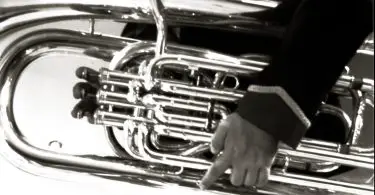
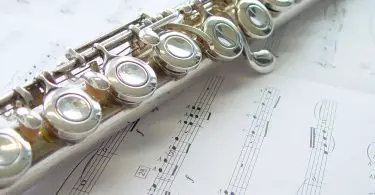
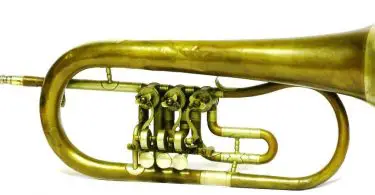
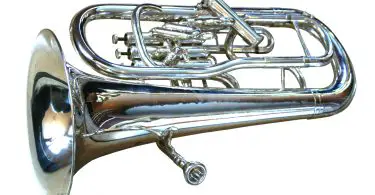
The French Horn usually gets beat out by the Mellophone for Marching. They are easier to tune and due to the thicker rimmed mouthpiece it’s less likely for shocks and bumps to cause disruptions. It is also is more distinct from the soprano (trumpet) and the Baritone, with a brighter/more piercing sound that cuts through.
It is all really about preference though, I like to keep a French Horn in for the lower register. Worth checking out both if you’re looking specifically for a Marching instrument.